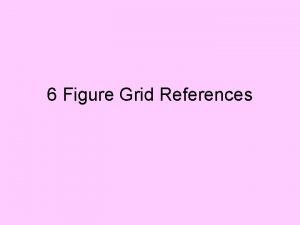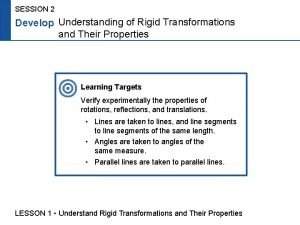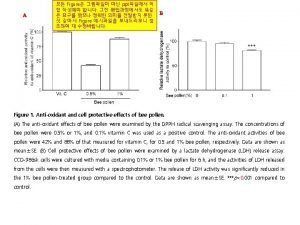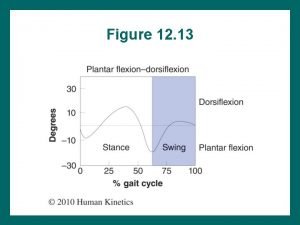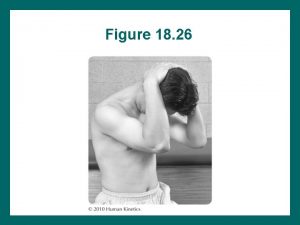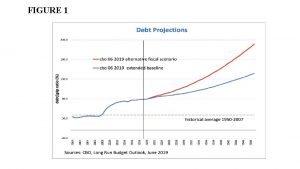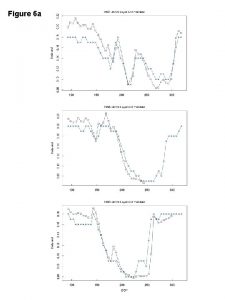Figure 1 17 Security Management n Security is










- Slides: 10

Figure 1 -17: Security Management n Security is a Primarily a Management Issue, not a Technology Issue n Top-to-Bottom Commitment ¡ Top-management commitment ¡ Operational execution ¡ Enforcement 1

Figure 1 -17: Security Management n Comprehensive Security ¡ Closing all avenues of attack ¡ Asymmetrical warfare n Attacker only has to find one opening ¡ Defense in depth n Attacker must get past several defenses to succeed ¡ Security audits n Run attacks against your own network 2

Figure 1 -17: Security Management n General Security Goals (CIA) ¡ Confidentiality n Attackers cannot read messages if they intercept them ¡ Integrity n If attackers change messages, this will be detected ¡ Availability n System is able to server users 3

Figure 1 -18: The Plan—Protect— Respond Cycle n Planning ¡ Need for comprehensive security (no gaps) ¡ Risk analysis (see Figure 1 -19) n Enumerating threats n Threat severity = estimated cost of attack X probability of attack n Value of protection = threat severity – cost of countermeasure n Prioritize countermeasures by value of prioritization 4

Figure 1 -19: Threat Severity Analysis Step Threat A B C D 1 Cost if attack succeeds $500, 000 $100, 000 $10, 000 2 Probability of occurrence 80% 20% 5% 70% 3 Threat severity $400, 000 $2, 000 $5, 000 $7, 000 4 Countermeasure cost $100, 000 $3, 000 $20, 000 5 Value of protection $300, 000 ($1, 000) $3, 000 ($13, 000) 6 Apply countermeasure? Yes No 7 Priority 1 NA 2 NA 5

Figure 1 -18: The Plan—Protect— Respond Cycle n Planning ¡ Security policies drive subsequent specific actions (see Figure 1 -20) n Selecting technology n Procedures to make technology effective n The testing of technology and procedures 6

Figure 1 -20: Policy-Driven Technology, Procedures, and Testing Policy Technology (Firewall, Hardened Webserver) Protection Only allow authorized personnel to use accounting webserver Procedures (Configuration, Passwords, Etc. ) Attempt to Connect to Unauthorized Webserver Testing (Test Security) 7

Figure 1 -18: The Plan—Protect— Respond Cycle n Protecting ¡ Installing protections: firewalls, IDSs, host hardening, etc. ¡ Updating protections as the threat environment changes ¡ Testing protections: security audits 8

Figure 1 -18: The Plan—Protect— Respond Cycle n Responding ¡ Planning for response (Computer Emergency Response Team) ¡ Incident detection and determination n Procedures for reporting suspicious situations n Determination that an attack really is occurring n Description of the attack to guide subsequent actions 9

Figure 1 -18: The Plan—Protect— Respond Cycle n Responding ¡ Containment Recovery n Containment: stop the attack n Repair the damage ¡ Punishment n Forensics n Prosecution n Employee Punishment ¡ Fixing the vulnerability that allowed the attack 10
 Provate security
Provate security An operation that maps an original figure onto a new figure
An operation that maps an original figure onto a new figure How to do 6 figure grid references
How to do 6 figure grid references Rigid transformation review
Rigid transformation review What is the name of the solid figure
What is the name of the solid figure Pyramid levels of management
Pyramid levels of management Management pyramid
Management pyramid Top management and middle management
Top management and middle management What is the osi security architecture
What is the osi security architecture Guide to network security
Guide to network security Wireless security in cryptography
Wireless security in cryptography


